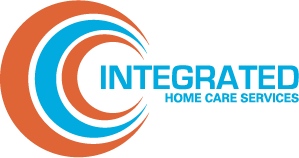By Christopher Bradbury, CEO, IHCS

Home care will continue its significant growth trajectory over the next few years, as both the demand—and need—for services rises. Yet health plans and providers face an array of logistical, operational, and technical challenges that threaten their ability to effectively meet this burgeoning demand. Those that proactively prepare by embracing new home care delivery approaches and strategies, will be much more likely to experience success in the years ahead. Read on for my thoughts on what home care stakeholders should be doing now to help their organizations thrive in 2023—and beyond.
Demand Versus Execution
Plans and providers are already facing greater demand for in-home services, as well as increased utilization across a broader spectrum of patient types in both the pre- and post-acute care space. At the same time, these higher volumes are coinciding with a continued climb in home care expenditures, which CMS projects to increase by nearly 7% year-over-year.
My biggest concern, as I consider the coming year, is whether plans and providers are ready—and able—to provide timely access to high-quality home care as demand increases. I fear that many will not. This concern is driven by many conversations I have had with our team and with prospective health plan partners over the past several months. The common theme has been that the historical approach to care coordination, provider network management, and care delivery and support is not meeting the evolving and increasing needs associated with home care.
Industry research aligns with what I’m hearing from the field. In November 2022, healthcare consultancy Sage Growth Partners surveyed 47 health plan executives to learn more about their care at home challenges. Only one-third said their plan currently supports members’ utilization of home care services “very well,” and more than two-thirds said they struggle with high emergency department utilization, frequent readmissions, and fragmented care experiences among home care members.
In Progress: A Better Way
While the utilization trends, current pitfalls, and survey findings are alarming, the news is far from all bad when it comes to home care in 2023. In fact, I’m optimistic that, this time next year, the home care environment will have advanced in a much more positive direction.
Why? The burgeoning demand for home care services is drawing more attention to both its value, as well as the need to improve services and delivery. Home care is finally getting the care and attention it deserves—and as a result, more plans and providers are seeking out new and more effective ways to provide high-quality, value-based care at home.
In fact, last year, we experienced unprecedented demand for our services,
and expanded our footprint to provide our unique home care benefits management model to health plans in more than a dozen states. We’re on track to continue that expansion this year, and multiple additional plans have already reached out to learn more about how we can help them enhance care quality, increase member satisfaction, and rein in spending.
What is a Home Care Benefits Manager?
- Manages all aspects of home care for health plans, including network development, utilization management, and claims processing.
- Enhances care coordination across all service lines (including home health, home infusion, and durable medical equipment).
- Operates with alternate payments including a fully capitated payment model, aligning incentives between payers and providers to drive meaningful savings.
Currently Activated: Innovative Partnerships
As we establish partnerships with even more health plans, we’re listening closely to their needs and working hard to meet and exceed our mutually-agreed upon objectives.
To that end, we’re focusing on several key areas this year. These include providing our plan partners with:
- Timely access to high-quality care in the home – guaranteed
- More integrated data through our MedTrac Platform
- Deeper insights that can drive additional proactive interventions and better outcomes
- Enhanced transitions of care experience from the hospital or other facilities
- Operational enhancements that improve efficiencies
We view partnerships as an optimal approach to extending the promise of home-based care—and unlock its full potential in dramatically impacting overall care quality and costs throughout the industry. While home care only comprises a single digit percentage of Medicare spend, it supports some of healthcare’s highest-cost and most complex patients, which make up a significant portion of the overall Medical spend. Optimal home care for these patients can translate to better outcomes, higher engagement, and lower costs across the board.
Home care’s growth is validating our care delivery model, reaffirming that our mission to deliver unparalleled, patient-centric, in-home care services is one that is both highly valued and in high demand. This year, we will continue to pursue growth so that we can help patients and their loved ones experience the best care possible in the home.












